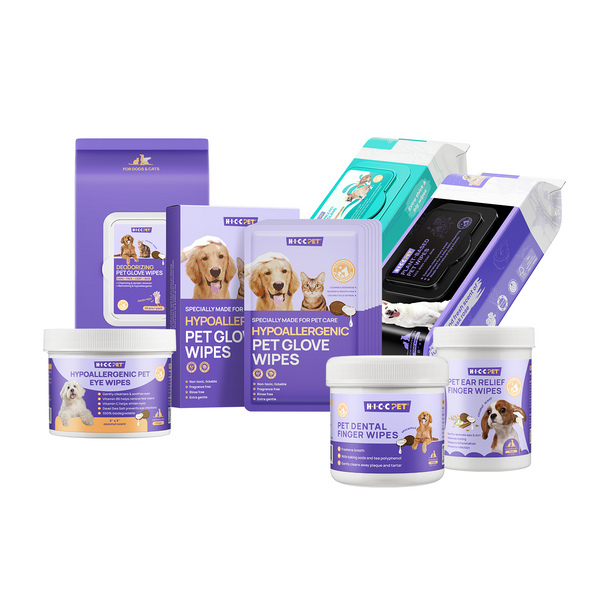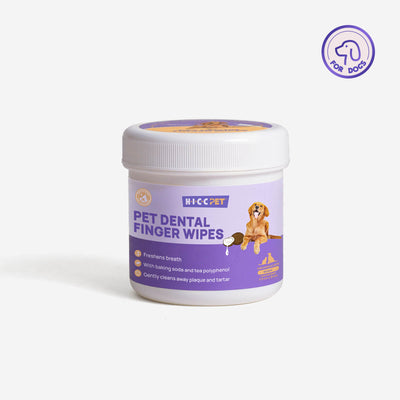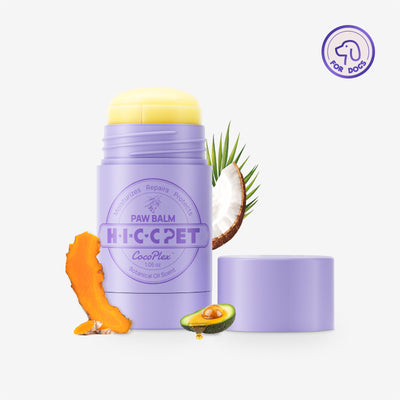Bringing home a new dog or cat can be one of the most exciting ventures a pet lover can take on. Whether you’re a seasoned pet pro or you're becoming a pet parent for the very first time, adopting a new pet comes with responsibilities and requires preparation. Before you bring a new dog or cat home, it's essential to do your research and understand the process of pet adoption, know how to prepare your home, and set you and your pet up for success in your new endeavor.
Understanding the Adoption Process

For those who have never adopted a pet, the process can occasionally be a bit overwhelming depending on where you’re adopting from. For example, city and county-run shelters are a bit more lax on their requirements and often do free adoption events due to constantly being at over capacity. Privately run rescues, on the other hand, often require a more in-depth application, have very specific home and lifestyle requirements for certain pets and most of the time require a home and yard check.
Shelters also have lower adoption rates due to being publicly funded whereas private rescues almost always have a higher adoption rate as they have to pay out of pocket for all medical expenses including the spay/neuter , vaccines, microchip, and any other necessary medical care while relying on donations and grants. Certain private rescues’ fees may seem a bit exorbitant but this is often due to rescuing an in-demand purebred dog and the need to filter serious adopters who are familiar with the breed and not just someone adopting on a whim.
With both shelter and rescue adoption, all pets coming home with you will already be spayed/neutered, vaccinated, and microchipped. The exception may be a pet who is either too young or sick to be spayed/neutered in which case you would sign a contract and receive a voucher for a free spay or neuter. Some pets are also too young to receive all of their vaccinations in which you will also be obligated to finish their full round of vaccinations.
Preparing Your Home

While it would be nice to just have the supplies and then immediately bring your new dog or cat home and that's it....it’s best to take the necessary steps to prepare your home for their arrival for both their safety and lessen the risk of damage to your home and belongings.
Pet Proofing Your Home and Yard
Whether you’re bringing home an 8-week-old puppy or kitten or a fully grown adult pet, pet-proofing your home can provide you with some peace of mind as well as prevent home damage and lessen the chance that your new pet ingests something dangerous. While pet-proofing may look different between dogs and cats as well as how old they are, here are some general recommendations to follow:
Tie up hanging cords such as for curtains or blinds which can lead to strangulation
Put a lock on the trash can or get a locking trash can
Put a lock on cabinets with toxic items such as cleaning supplies under the sink or medication in the bathroom
-
Remove dangerous and toxic items from countertops and pet level such as:
Toys that are too small, electric cords, curtain cords, lit candles, toxic foods and toxic plants
Keep shoes and other chewable items off the floor (especially for puppies)
For the yard, we suggest:
Move objects that dogs can climb on away from fences
Check for holes in the fence and repair
Put up barriers to your plants and flowers
Pet-proofing a home will look different for everyone as there are many factors that can change what that looks like. For example, some people who smoke will need to put ashtrays away from pets due to the nicotine toxicity. If you are unsure as to how to pet-proof your home, your veterinarian will be able to provide suggestions.
Create a Safe Space
Pets entering a new space will often always be stressed even if they don't look like it. They’re in a new home, with new people and possibly new animals. It can be extremely overwhelming. It’s essential to create spaces that your new pet can escape to away from people, noise, and other pets if possible. A safe space will look different for each pet. If possible, having access to a room like a guest room or office that contains all their necessities is a perfect solution for allowing your pet to adapt at their own pace. Avoid inviting guests over as your new pet is adapting, especially for those shyer animals, as they still need to know you and gain trust in you as well as give time for you two to bond.
For dogs who are already crate trained, even just setting up a crate with a blanket over it in the corner of your room can provide them some much-needed relief. If you have dogs in the home and are bringing home a cat, a tall cat tree or shelves are necessary for giving cats a space to get away from the other pups in the home.
Watch and listen to your pet. Our pets are always communicating with us and they can tell us when they’re stressed or overwhelmed. Don’t put them in situations they aren’t ready for and push them beyond their limits. Take it slow and let them go at their own pace.
Budgeting for Pet Care

Average Cost of Owning a Pet
The average cost of pet ownership has a monumental difference between dogs and cats as well as their size and age. In the end, the average cost of pet ownership, according to Metlife Insurance, is approximately $1,400 for dogs and $1,2000 for cats but this varies greatly. Let’s go over the breakdown including the cost of initially acquiring a pet:
Adopting a Pet: As mentioned above, there is often a difference in adoption fees between city or county shelters and private rescues. Dog and cat adoptions from shelters can run between $75-$150 on average with puppies and kittens costing more. But, plenty of shelters host adoption events with reduced fees to as low as $0 including the spay/neuter, microchip, and vaccines. Private rescues are often more expensive to do relying on private funding and public donations meaning the cost for all medical care comes out of their own pocket as they also don’t have their own veterinarian like shelters do. Rescue adoption fees often start out around $150 but can even run up to $1,000 depending on the rescue’s specialty, demand for their animals, and if an animal requires more medical care than average. Certain rescues even raise prices to deter unserious adopters, especially for purebred dogs. These adoptions also include the spay/neuter, microchip, and vaccinations.
Pets from breeders can run, on average, between $1,000-$3,000 which may be less or more depending on the species, breed, breeder, and the pet’s familial background. Keep in mind, though, that if you intend on spaying or neutering, that will be an additional cost as well as all rounds of vaccinations.
Medical Costs: As previously mentioned, certain medical care like spay/neuter, microchip, and vaccinations are not included when buying a dog from a breeder. This is also something to keep in mind if taking in a rehomed pet from someone or finding a pet on the street. Initial medical costs can run you:
Dogs
Spay/Neuter: $0-$500 *
Core Vaccinations: $75-$150 **
Microchipping: $0-$50 ***
Cats
Spay/Neuter: $0-$400 *
Core Vaccinations: $75-$150**
Microchipping: $0-$50 ***
* Spay and neuter costs greatly vary depending on your location, breed, male vs female, and size. There are usually options for free and low-cost spay and neuter through city programs but private veterinarians are much more costly.
** Puppies and kittens often require more in their initial set of core vaccinations vs older pets. The cost greatly varies as there are low-cost options usually through private organizations at vaccine clinics.
*** Microchipping is also offered for free or very low cost through private organizations but is still on the lower end in regards to medical costs if done at a private vet. Registration is also free for many registry websites.
In addition to the routine wellness and preventive care, which may include paying for the veterinarian exam fee for an annual check-up and necessary vaccinations, it is essential to consider the estimated cost of possible medical expenses beyond the initial medical charges, such as those arising from illnesses and injuries, and include them in your budget. These expenses may increase considerably with age, and therefore, it's important to plan accordingly.
Medications like flea and tick medication are also included in preventative care. This runs on average for wellness care is $225 for dogs and $160 for cats. For preventive care, it’s $185 for dogs and $140 for dogs.
This doesn’t include the cost of veterinary care for emergencies or illnesses. This is when pet insurance comes in handy as it can greatly reduce out-of-pocket costs for a situation like your puppy breaking their leg or your senior cat developing kidney disease. When it comes to preparing for unexpected medical costs, it’s wise to have funds set up prior to adoption in a separate savings account and continue contributing to it throughout the years.
Food and Supplies: This includes everything from toys, food, litter, supplements, etc that you can expect to pay for your pet. Keep in mind that large dogs like Great Danes are significantly more expensive than a chihuahua. Unfortunately, supplies for pets have increased as has everything so this is also something to keep in mind. Food for dogs usually run on average of $30-$200 based on size, dietary restrictions, and brand of food. For example, fresh food will be much more costly. This goes for cats as well. A basic diet can be $30 a month but run up higher to around $150. Toys can come in about an average of $20-$100 a year. Litter for cats comes in at an average of about $30 a month.
Establishing a Routine
While at this stage, you are still planning on adopting a pet. But what will you do for training and a routine? This is something to know before adopting a pet to ensure that it will work for YOUR routine. For example, you better be ready to commit to the potty schedule for a new puppy who is going out every hour. Not all pets will have a routine that everyone is ready to commit to. Some dogs will require way more exercise than others and require more walks/runs, more enrichment and so forth. Both dogs and cats crave a routine to decrease stress as they prefer predictability. A cat’s routine is a bit more flexible and doesn’t necessarily require much pre-planning but know that breeds such as Bengals will require much more energy than your standard house cat.
Figure out what boundaries you will be setting for your dog or cat ahead of time and be prepared to start enforcing this almost immediately while they’re in a learning stage. This even goes for kittens who will start climbing everything and anything they can from the moment they are brought home.
Stocking Up on Supplies

When you bring home a new pet, it’s best to have everything you will need ahead of time. The following supplies are suggestions on what to have before adopting a pet:
Food and Treats
Appropriate toys
Leash
Harness
Collar and ID tags (Yes, cats need collars too. Get a breakaway collar to prevent injuries)
Grooming supplies such as HICC Pet® Grooming Glove wipes and Anal Gland Wipes for those unexpected messes
Litter and litter box*
Crate for crate training
Dental supplies such as HICC Pet® Dental Finger Wipes and Oral Care Spray
Cat tree*
Flea and tick preventative
Poop bags or litter bags
Training materials such as a clicker if this is how you will be training
*cats only
This can be a bit overwhelming when figuring out what you need but your local independent pet store will be able to assist in picking out supplies.
Resources for Pet Owners
Before bringing a new pet home, it's important to choose a veterinarian, locate the nearest emergency vet, and consider training classes. The earlier you start, the better. We recommend keeping a list of all important contacts on your fridge for easy access by anyone in your home who may be caring for your pet. This list should include your regular vet, the closest emergency vet, and emergency contacts. Another contact you may consider adding is the Pet Poison Hotline , especially if you’re bringing home puppies or kittens who are more likely to get into everything and anything.
Conclusion
Please note that the information provided in this article is for educational and informational purposes only. We are not veterinarians, and the content shared here should not be considered professional veterinary advice.
If you have any questions regarding copyrights or the use of materials in this article, please contact us for clarification.








Thanks for your interaction and support.